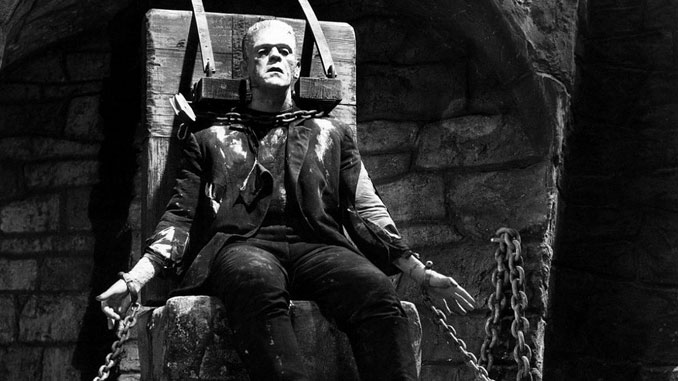
With this week marking the 87th anniversary of one of the most influential movies of all time, let’s all agree to take a break from Red Dead Redemption for a few minutes to show a little bit of appreciation. On November 21, 1931, Frankenstein was released into theaters to audiences newly clamoring for horror films. With the success of Dracula earlier that same year, Universal Studios knew that they had struck gold and immediately started production on another wave of horror films to meet the audiences’ new demand. While these days this might mean that the studio pushes out a CGI-addled movie that simply rides the coattails of a more successful lighting-in-a-bottle film, back in 1931, Frankenstein would go on to outdo Dracula in almost every way, giving birth to a cultural phenomenon in the process.
There are so many images that immediately come to mind when Frankenstein is mentioned: the graveyard from the opening, the lab sequence, and the burning of the windmill at the film’s end. Most horror fans, even if they haven’t seen the film, are familiar with these scenes because of how they’ve become staples of the horror franchise—iconic sequences that filmmakers have been mimicking and trying to remake over the course of the franchise’s 87-year history. In the same vein, most horror fans would still be able to name the movie responsible for the line “It’s alive!”
And all of this without mentioning the most iconic centerpiece of the film itself: the Frankenstein Monster.
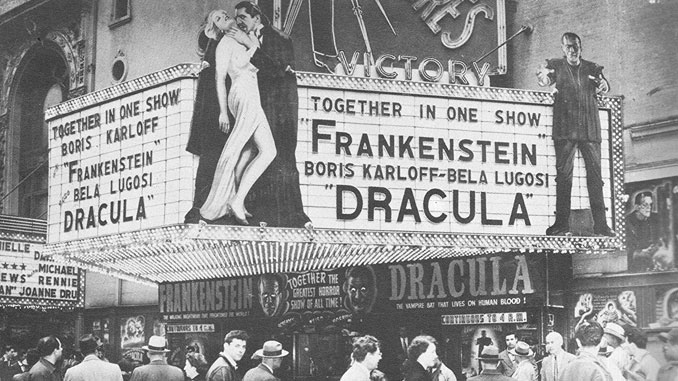
What would a discussion of Frankenstein be without mentioning the monster itself? Now, we’ve heard the old Hollywood legend that Bela Lugosi was the studio’s first choice for the role of the Monster (and ended up in the costume several years later in Frankenstein Meets the Wolf Man) but I know I’m also not alone in saying that it’s hard to picture anyone other than Boris Karloff in the role.
While Karloff was made for the role, Jack Pierce perfected the package with the makeup work that put him on the map in Hollywood. Just watch the film to see how confident the production team was in the makeup and creation of the monster; its first appearance on screen is when the Monster opens a door facing away from the camera, slowly turns, and the camera zooms in on his face not once, but twice! For audiences in 1931, this was surely one of the most shocking onscreen moments since Lon Chaney was unmasked in Phantom of the Opera.
On the subject of 1931 audiences, let’s discuss the fact that the creative powers of Hollywood used to be at the mercy of the censors. After the induction of the Production Code in 1934, the censors mercilessly took their scissors to this movie, hacking out anything that they thought was blasphemous, violent, or too shocking for audiences. As such, Henry’s famous “It’s alive!” was severely altered, and Maria’s death was left open-ended as the scene of the Monster throwing her into the lake was cut. For a very long time, audiences were treated to a bastardized version of what was left of the movie after the censors had their way with it. Only through rediscovery and piecing the film back together are we treated with the masterpiece James Whale imagined.
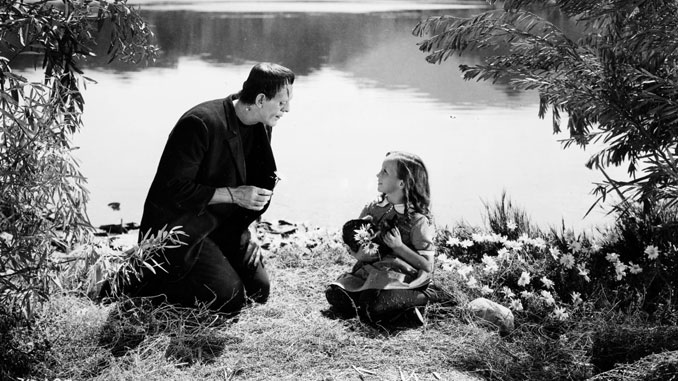
And masterpiece it is—Frankenstein is one of only a few films to currently hold a 100% freshness rating on Rotten Tomatoes. But what is it about the film that makes it a masterpiece? To me, the main answer is originality.
While it is true that Frankenstein was based off of Mary Shelley’s outstanding homonymous novel (which celebrates its 200th anniversary this year), fans who have read the classic will know that the film is much its own beautifully crafted story, just with borrowed characters and similar events. Creative liberties included things like focusing more on the creation of the Monster, adding a love story, and even creating characters that never existed in the book. And in a lot of ways, though people may hate me for this, these choices help the story to outshine that of the novel. It made things simpler and more digestible, which was perfect for an audience hungry for horror.
Another major element that I feel makes Frankenstein a masterpiece is its set design. The graveyard at the beginning of the film, for example, is always the first thing that comes to mind when I remember my first viewing of this film. The lab set where the creation takes place is also iconic and has been replicated over and over again in countless films that have dealt with science since.
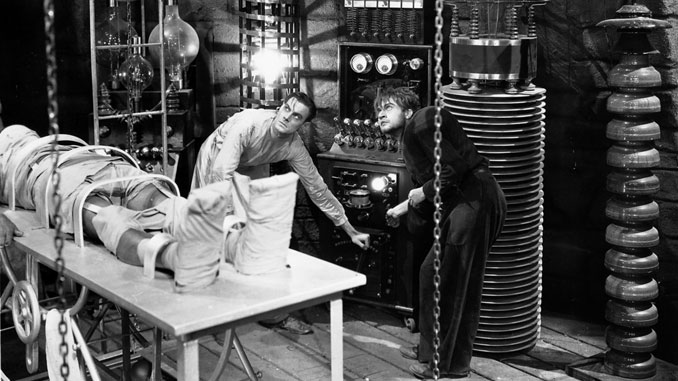
And finally, the script is fantastic, with really great dialogue throughout—mostly from Colin Clive’s character, Henry Frankenstein. His dialogue with Edward van Sloan’s character about the nature of scientific curiosity is one of my favorite scenes of all time.
Having said all of this, there are, of course, a few nitpicks that I do have with Frankenstein. It’s taken a while, but after rewatching the movie countless times over the years, I can finally identify a few things that didn’t sit well with me. I’m not concerning myself with poor line delivery or overreacting from extras—these things are acceptable from a film that was made at a time when “talkies” were still relatively novel. No, these are things that just don’t make sense in the overall scheme of the movie.
For example, why does Fritz instantly dislike the Monster? One can argue that the ball would have never started rolling without Fritz’s abuse, but the movie never explains where this hatred came from or why. Another thing that’s always bothered me is that the jar containing the brain that was implanted into the Monster is clearly labeled as abnormal. Why would Dr. Frankenstein ignore this warning? And lastly, the love triangle between Henry, Elizabeth, and Victor is introduced in one scene and never mentioned again. Why even bring it up if you aren’t going to go anywhere with it? Like I said, these are nitpicks rather than legitimate complaints.
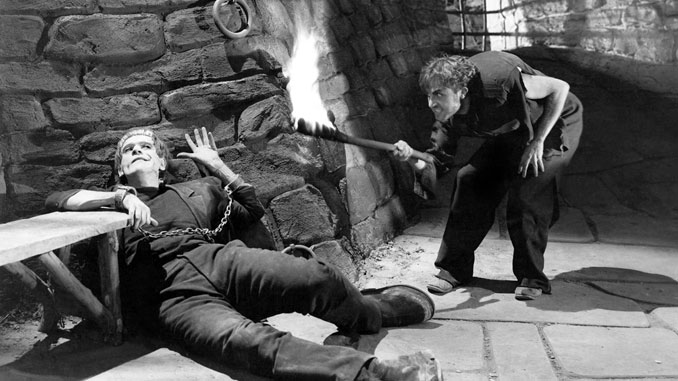
Overall, Frankenstein is one the greatest horror films ever made for many reasons. Is it a totally flawless movie? No. But every great work of art has its critics. Plainly, this film set the bar for horror movies and continues to serve as a major inspiration within the genre today. And with all of its sequels and remakes over the past eight decades—and even talk of another Frankenstein film coming from the Dark Universe series, if that project can ever get off of the ground—its staying power is proving to be holding strong. But no matter how many remakes or reboots are made, nothing will ever top the 1931 classic. Here’s to 87 more years of this fantastic film.

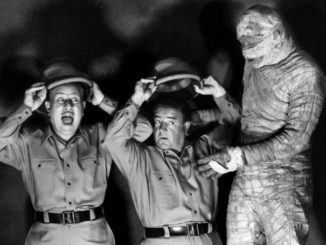
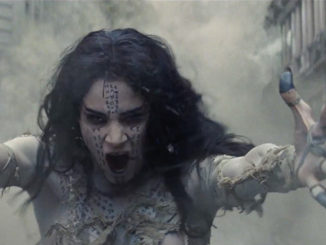
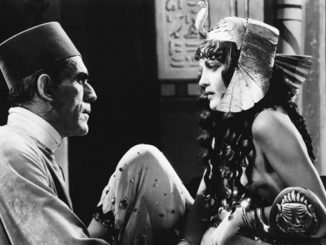
Be the first to comment